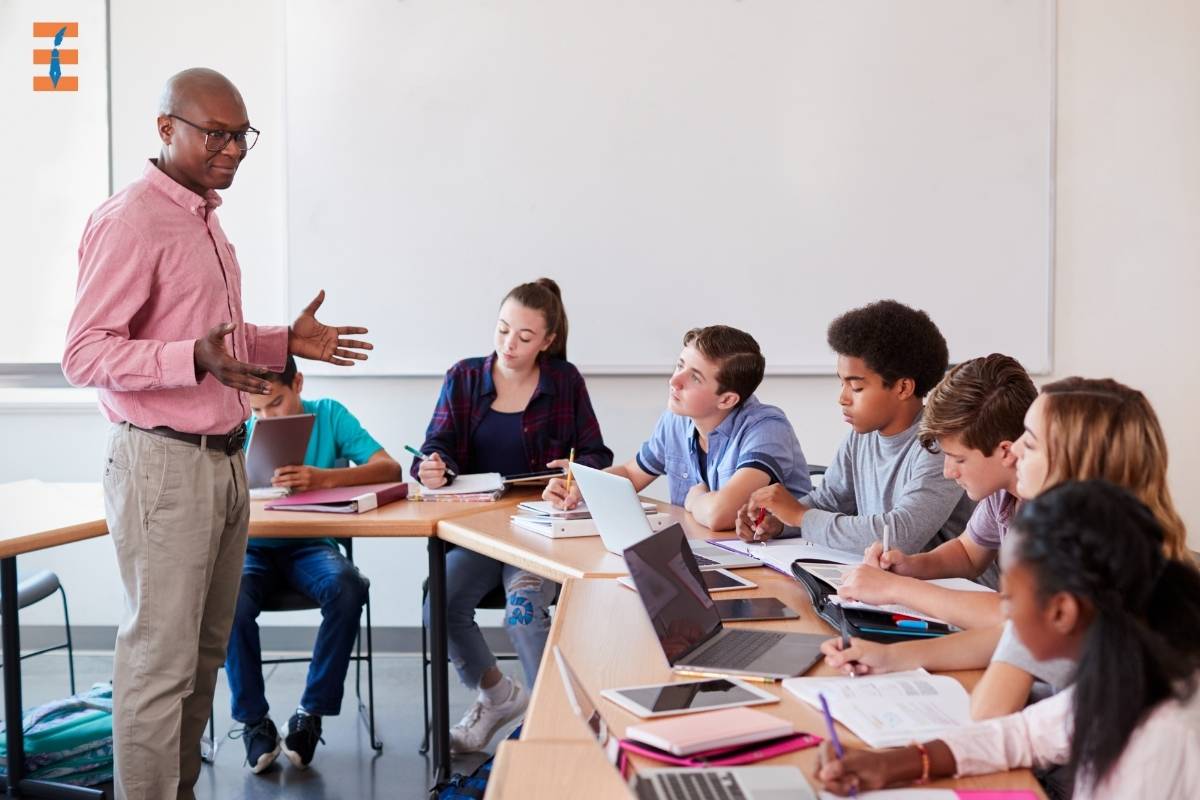
Flipped Classrooms
Imagine walking into a classroom where students are actively engaged, collaborating with peers, and taking charge of their learning. This is the essence of the flipped classroom model—a revolutionary approach to teaching that turns traditional methods on their head. Instead of lectures dominating class time, students explore concepts at home through videos or readings and come to class ready for hands-on activities and discussions.
This innovative method not only fosters deeper understanding but also empowers students to learn at their own pace. As education evolves in our rapidly changing world, flipped classrooms have emerged as a compelling solution for enhancing student engagement and performance. Let’s dive into what makes this approach so effective and how it can transform the way we think about teaching and learning in modern classrooms.
What is a Flipped Classroom?
A flipped classroom is an innovative teaching approach that redefines the traditional learning environment. Instead of delivering lectures during class time, educators assign instructional content for students to study at home.
This content often comes in the form of video lectures, podcasts, or reading materials. The goal is to equip students with foundational knowledge before they enter the classroom.
Class time then shifts focus from passive listening to active engagement. Students participate in discussions, collaborative projects, and hands-on activities that reinforce what they’ve learned.
This model encourages critical thinking and allows teachers to provide personalized support where it’s needed most. In essence, it transforms classrooms into dynamic spaces where exploration and interaction thrive.
The History and Evolution of Flipped Classrooms
The concept of flipped classrooms emerged in the early 2000s, primarily through the innovative efforts of educators Jonathan Bergmann and Aaron Sams. They sought to enhance student engagement by reversing traditional teaching methods.
Initially, lessons were recorded as videos for students to watch at home. This approach allowed class time to focus on discussions and hands-on activities rather than lectures.
As technology advanced, so did the flipped model. The rise of online platforms made it easier for teachers across disciplines to adopt this method.
Today, flipped classrooms are not limited to high school settings; they have spread into universities and even elementary schools worldwide. Educators now explore various tools like interactive videos and educational apps that promote active learning during classroom hours.
This evolution highlights a shift towards student-centered education where personalized learning takes precedence over one-size-fits-all lectures.
Benefits of Flipped Classrooms for Students and Teachers
Flipped classrooms offer a refreshing approach that transforms the learning experience. Students engage with instructional material at home, allowing classroom time for deeper exploration and collaboration. This model encourages active participation, empowering students to take charge of their learning journey.
Teachers benefit as well. With more in-class time dedicated to activities and discussions, they can provide personalized support tailored to individual needs. The focus shifts from lecturing to facilitating meaningful interactions.
Additionally, this method fosters stronger relationships between teachers and students. When educators become guides rather than mere disseminators of knowledge, it creates an environment ripe for curiosity and critical thinking.
Moreover, flipped classrooms can cater to various learning styles. Visual learners thrive on video content while auditory learners appreciate podcasts or discussions—making education more inclusive for everyone involved.
How to Create a Successful Flipped Classroom
Creating a successful flipped classroom begins with clear communication. Set expectations for students about their responsibilities before and after class. This clarity fosters accountability.
Next, curate engaging content that captures interest. Use videos, podcasts, or articles to present lessons in a dynamic way. Ensure these resources are accessible outside of school hours.
Design activities that promote collaboration during class time. Group discussions or hands-on projects encourage interaction among peers while solidifying understanding of the material.
Regular feedback is crucial as well. Allow students to voice their thoughts on what works and what doesn’t in your model. Adjust accordingly to enhance effectiveness.
Incorporate formative assessments frequently. These help gauge comprehension and guide future instruction while keeping everyone engaged in the learning process.
Technology and Resources for Flipped Learning
Technology plays a pivotal role in the flipped classroom model. It enables teachers to deliver engaging content outside of traditional settings. Video lectures, podcasts, and interactive quizzes are just a few tools that allow students to learn at their own pace.
Platforms like Edpuzzle or Flipgrid facilitate video interaction. Educators can embed questions directly into videos, promoting active learning right from home.
Learning management systems (LMS) such as Google Classroom or Canvas streamline assignments and feedback. They provide centralized access to resources, making it easier for both students and teachers.
Moreover, collaboration tools like Padlet foster teamwork among peers. Students can share insights on projects and discuss topics beyond school hours.
Utilizing social media platforms also enhances engagement. Twitter chats or Facebook groups create vibrant communities where learners can connect over shared interests in subjects they’re passionate about.
Challenges and Solutions for Implementing Flipped Classrooms
Implementing flipped classrooms can present various challenges for educators. One significant hurdle is the initial resistance from both students and teachers. Traditional teaching methods are deeply ingrained, making transitions difficult.
A lack of access to technology also poses a problem. Not every student has reliable internet or devices at home, which can hinder their ability to engage with pre-recorded lectures or online resources.
To tackle these issues, schools can offer training sessions for teachers. Developing confidence in using new teaching models makes a difference.
Providing alternative resources can help bridge the technology gap too. Schools might set up after-school programs where students without internet access can complete their assignments.
Creating a supportive community among faculty encourages sharing best practices and troubleshooting together, fostering an environment of collaboration that benefits everyone involved in this transformative model of education.
Case Studies: Real-Life Examples of Successful Flipped Classrooms
One notable case study comes from a high school in Colorado. Teachers began flipping their classrooms by assigning video lectures as homework. In class, students engaged in hands-on projects and discussions. This shift led to improved understanding of complex topics.
Another inspiring example is found at a college in California, where professors used flipped models for large lecture courses. Students watched recorded lectures before class and utilized classroom time for group activities and problem-solving sessions. The result? Higher exam scores and increased student satisfaction.
A middle school in New York adopted the flipped model as well, focusing on math instruction. With online quizzes during homework hours, teachers could track progress effectively and provide targeted support during lessons.
These real-world examples illustrate how the flipped classroom approach transforms traditional education into more interactive experiences that foster deeper engagement among students.
Future Implications and Potential Impact of Flipped Classrooms in Education
The flipped classroom model is poised to reshape the landscape of education. As technology continues to evolve, more educators are embracing this innovative approach. This shift encourages a deeper understanding of subject matter.
Increased accessibility is one major implication. Students can revisit recorded lessons at their own pace, enabling personalized learning experiences. This flexibility caters to diverse learning styles and helps bridge gaps in knowledge.
Moreover, teachers will take on new roles as facilitators rather than mere transmitters of information. They’ll guide discussions and foster critical thinking during class activities.
Future classrooms might also see greater collaboration among students through project-based learning initiatives. Engaging in real-world problems enhances teamwork and communication skills vital for today’s workforce.
As schools adopt these practices more widely, we can anticipate a cultural transformation that prioritizes student agency and responsibility over traditional rote memorization techniques.
Conclusion
The flipped classroom model represents a significant shift in traditional teaching methods. By moving lectures outside the classroom and creating engaging, interactive activities during class time, educators can foster deeper learning experiences.
This innovative approach not only enhances student engagement but also empowers teachers to provide personalized support. As technology continues to evolve, resources for implementing flipped classrooms will likely expand, making it easier for educators to adopt this model.
While challenges exist—such as ensuring all students have access to necessary technologies—solutions are being developed that address these issues. The numerous success stories from various educational institutions highlight the effectiveness of this teaching style.
As we move forward in education, the potential impact of flipped classrooms is immense. They offer opportunities for collaboration and creativity that were previously difficult to achieve within traditional frameworks. Embracing this change could transform how knowledge is shared and absorbed across different learning environments.













Leave a Reply